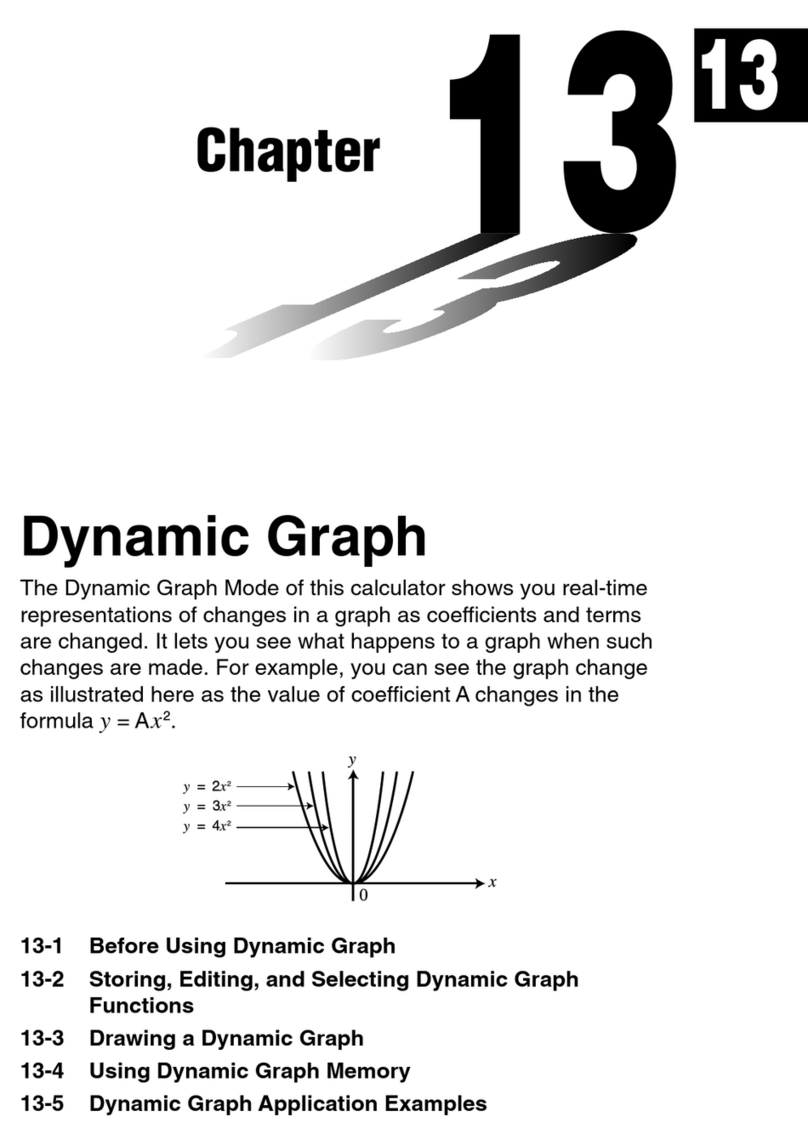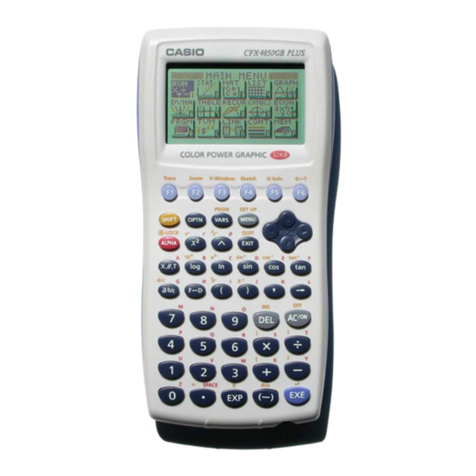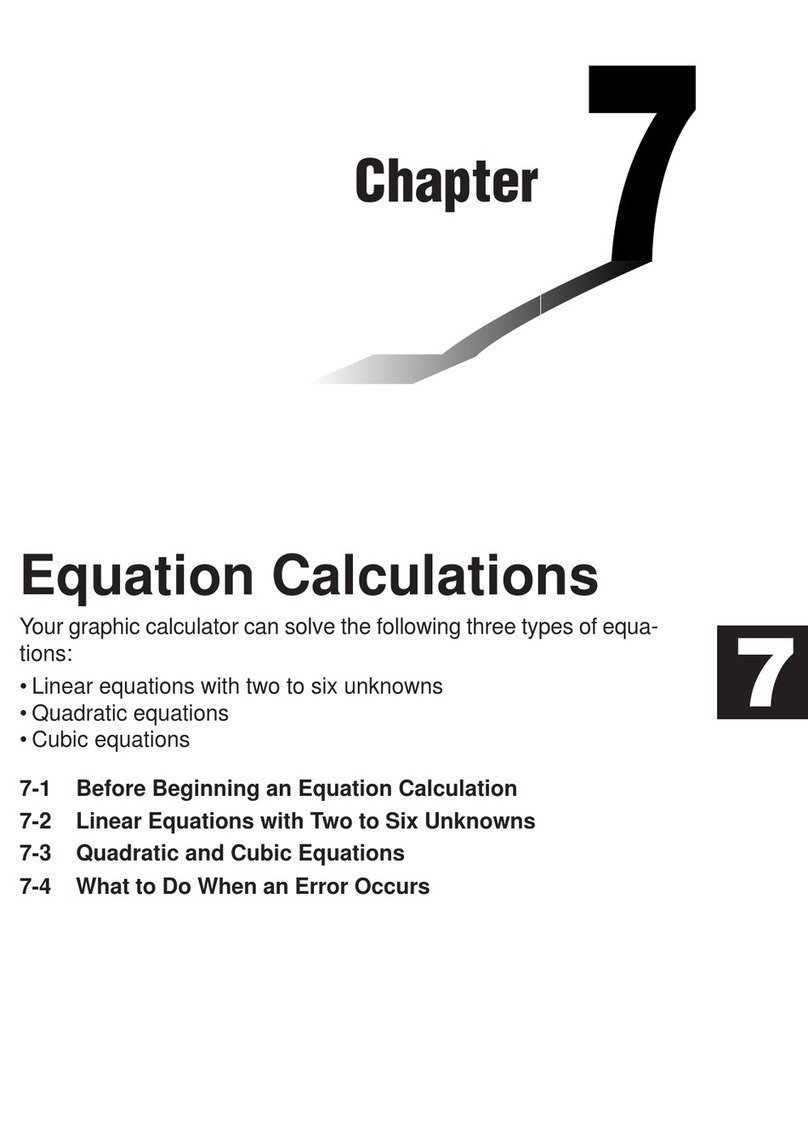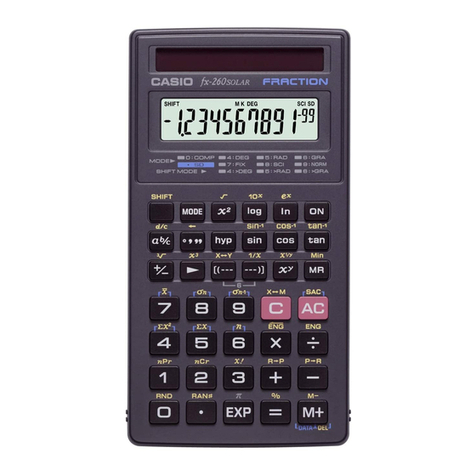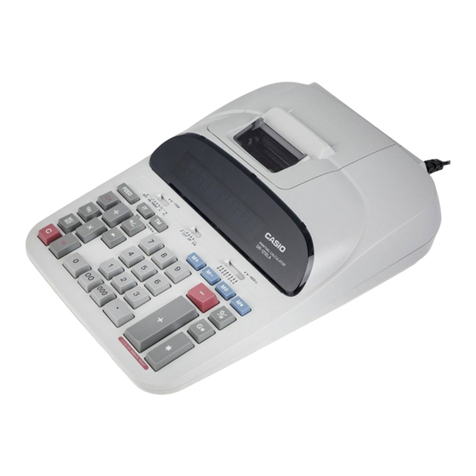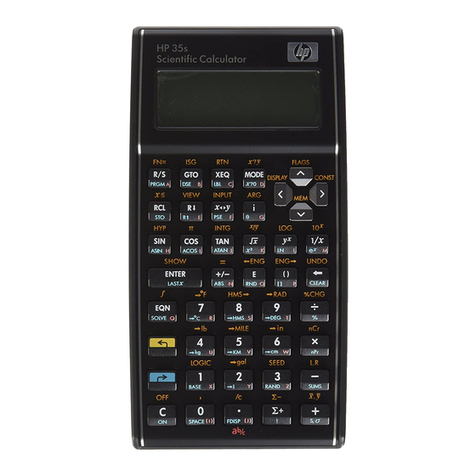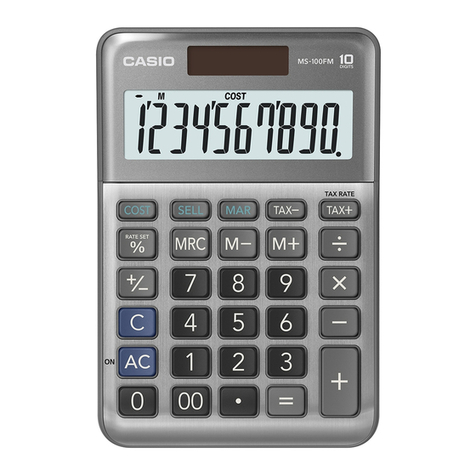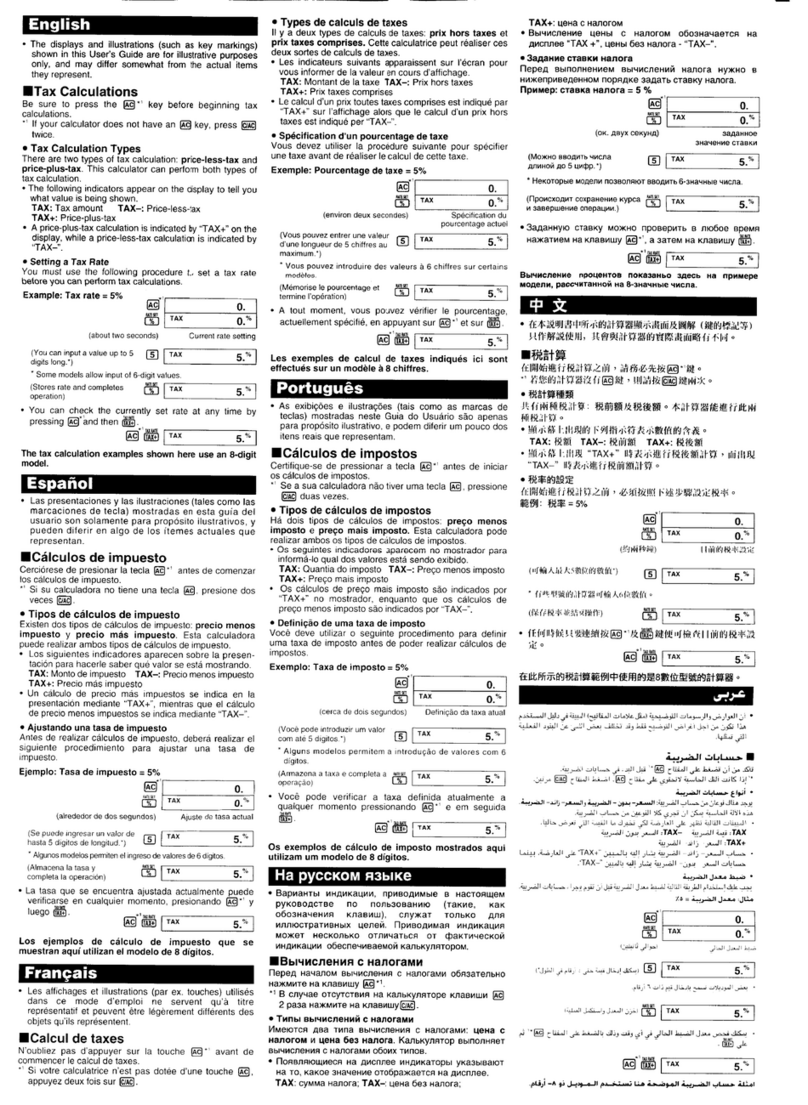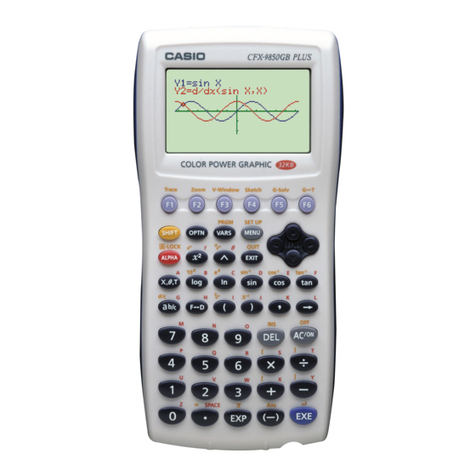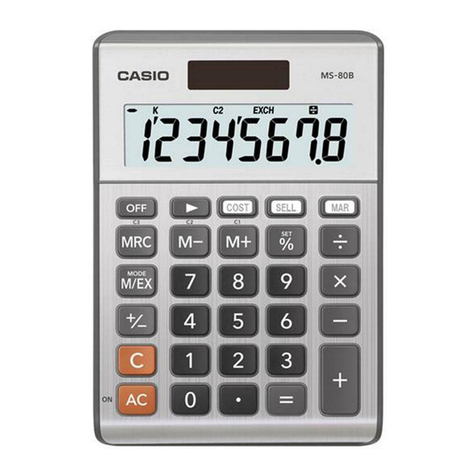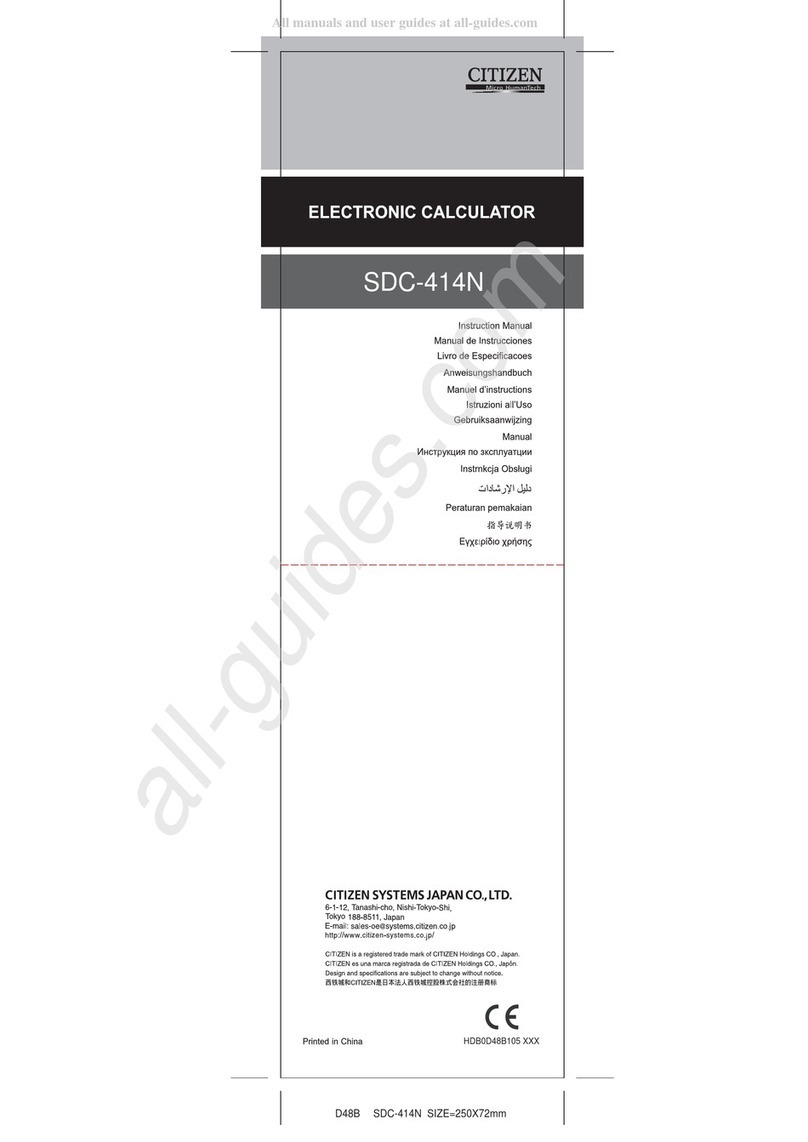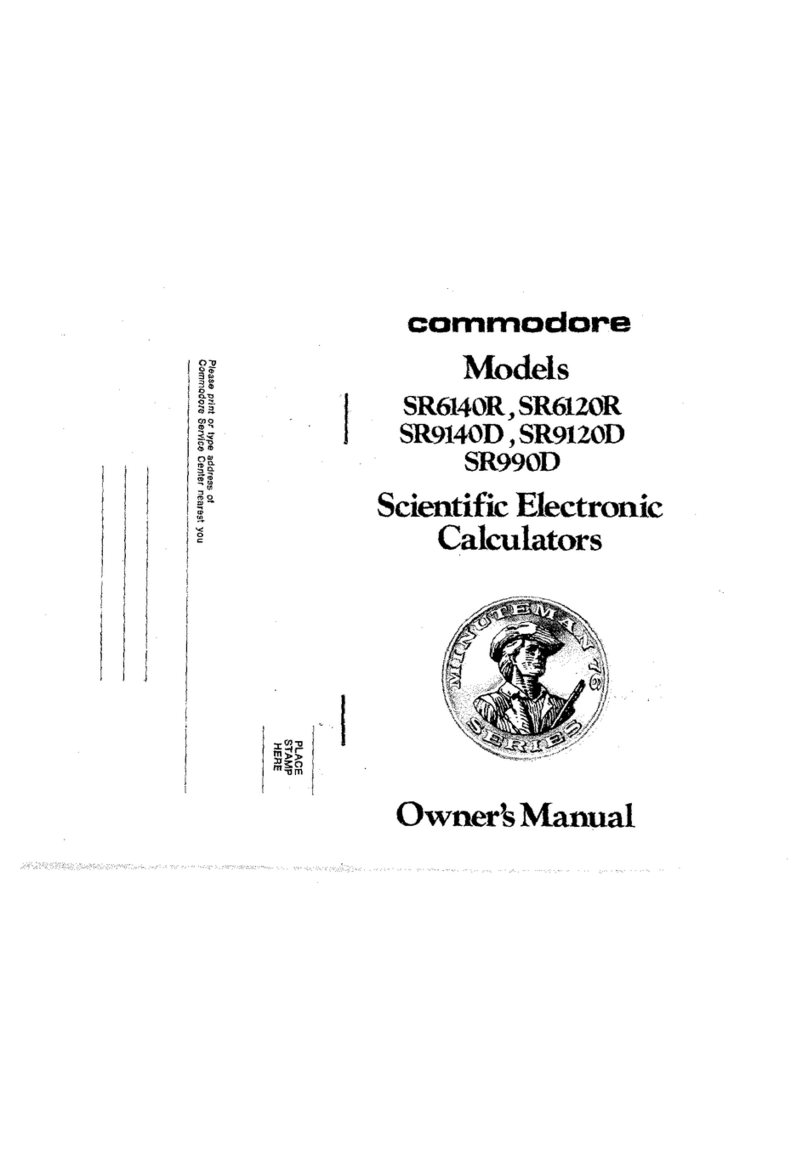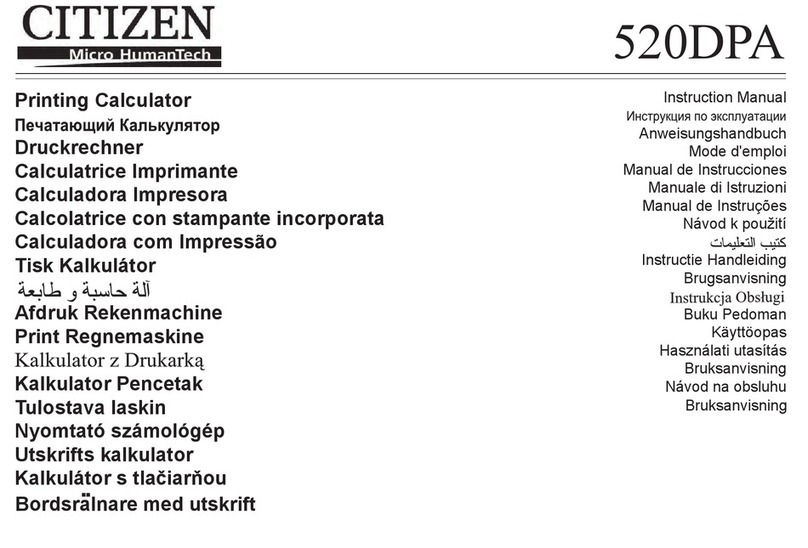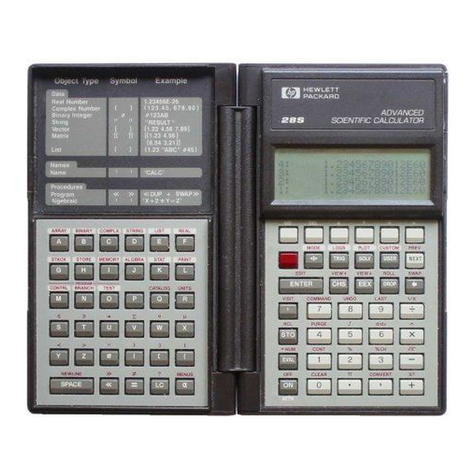
E-7
4 ssin30 s(30 + 10 s3) = 120
4 Q30 30 10 3
*
1
*
2*
3
*1Input of the closing parenthesis is required for sin, sinh, and other functions
that include parentheses.
*2These multiplication symbols (s) can be omitted. A multiplication symbol
can be omitted when it occurs immediately before an opening parenthesis,
immediately before sin or other function that includes parentheses,
immediately before the Ran# (random number) function, or immediately
before a variable (A, B, C, D, M, X, Y), Por e.
*3The closing parenthesis immediately before the operation can be
omitted.
Input example omitting *2and *3operations in the above
example.
4 Q30 30 10 3
Note: • If the calculation becomes longer than the screen width during
input, the screen will scroll automatically to the right and the ;indicator will
appear on the display. When this happens, you can scroll back to the left by
using Band Cto move the cursor. • When Linear Display is selected,
pressing Dwill cause the cursor to jump to the beginning of the calculation,
while Awill jump to the end. • When Natural Display is selected, pressing
Cwhile the cursor is at the end of the input calculation will cause it to jump
to the beginning, while pressing Bwhile the cursor is at the beginning will
cause it to jump to the end. • You can input up to 99 bytes for a calculation.
Each numeral, symbol, or function normally uses one byte. Some functions
require three to 13 bytes. • The cursor will change shape to Iwhen there are
10 bytes or less of allowed input remaining. If this happens, end calculation
input and then press .
Calculation Priority Sequence
The priority sequence of input calculations is evaluated in accordance with the
rules below. When the priority of two expressions is the same, the calculation
is performed from left to right.
1st Parenthetical expressions
2nd Functions that require an argument to the right and a closing
parenthesis “)” following the argument.
3rd Functions that come after the input value (x2, x3, x–1, x!, °’ ”, °, r, g,
%), powers (x9), roots ()
4th Fractions
5th
Negative sign (–)
Note: When squaring a negative value (such as –2), the value
being squared must be enclosed in parentheses (2 7;
). Since x2has a higher priority than the negative sign,
inputting 2 7would result in the squaring of 2 and then
appending a negative sign to the result. Always keep the priority
sequence in mind, and enclose negative values in parentheses
when required.
